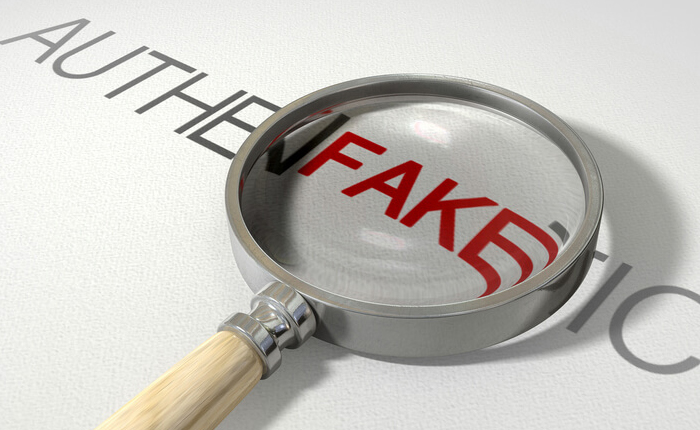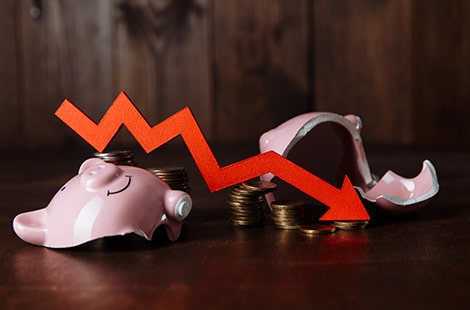Counterfeiting has become a global phenomenon with significant economic, social, and legal implications. It affects various industries, including fashion, electronics, pharmaceuticals, luxury goods, automotive parts, and more.
What does counterfeiting mean?
Counterfeiting refers to the act of producing, distributing, or selling goods or items that imitate or replicate genuine products with the intent to deceive consumers or without proper authorization. Counterfeit products are designed to appear identical or similar to legitimate brands or products, but they are typically of inferior quality and do not meet the genuine product’s standards.
Counterfeiters attempt to mimic the packaging, branding, and overall appearance of genuine products to deceive consumers into believing they are purchasing authentic goods.
Counterfeiting is considered illegal and unethical for several reasons:
- Intellectual Property Infringement: Counterfeit goods often violate trademarks, copyrights, or patents held by legitimate businesses. The unauthorized use of these protected intellectual properties is a violation of the law.
- Consumer Health and Safety: Counterfeit products are typically made without adherence to safety standards or quality controls. They can pose serious risks to consumer health and safety, as they may contain harmful substances or have faulty components.
- Economic Impact: Counterfeiting has significant economic consequences. It diverts sales and profits away from legitimate businesses, resulting in financial losses, reduced employment opportunities, and hindered economic growth.
- Brand Reputation Damage: Counterfeit goods can harm the reputation and trust consumers have in genuine brands. Inferior quality counterfeits can lead to negative experiences, eroding brand reputation and customer loyalty.
- Criminal Activity: Counterfeiting operations are often linked to organized crime networks involved in various illegal activities such as money laundering, tax evasion, and smuggling. The proceeds from counterfeit sales can fund other criminal endeavors.
What is a Counterfeit Product?
A counterfeit product is an imitation or replica of a genuine item that is created, distributed, or sold without proper authorization or with the intention to deceive consumers. Counterfeit products are designed to appear similar to legitimate brands or products, but they are typically of inferior quality and do not meet the standards or specifications of the genuine item.
There are several key characteristics of counterfeit products:
- Inferior Quality: Counterfeit goods are often made using substandard materials, manufacturing processes, or components. They may lack the durability, reliability, or safety features of genuine products.
- Lack of Legitimate Authorization: Counterfeit products are produced and distributed without proper authorization from the legitimate brand or trademark owner. They infringe upon the intellectual property rights of the original manufacturer.
- Deceptive Packaging and Branding: Counterfeiters go to great lengths to replicate the packaging, branding elements, logos, and trademarks of genuine products. This can make it challenging for consumers to differentiate between counterfeit and authentic items.
- Illegal Nature: Counterfeit products are considered illegal due to their unauthorized production and infringement on intellectual property rights. Selling, buying, or distributing counterfeit goods is against the law in most jurisdictions.
Purchasing counterfeit products can have various negative consequences, including risks to consumer health and safety, financial losses, damage to brand reputation, and support of criminal activities. It is important for consumers to be vigilant, purchase from reputable sources, and report suspected counterfeit items to help combat the production and sale of counterfeit goods.
How to identify Counterfeit Products?

Identifying counterfeit products can be challenging as counterfeiters often try to replicate the appearance of genuine products. However, there are several key indicators that can help you identify potential counterfeits. Here are some tips on how to identify counterfeit products:
- Price Discrepancy: If the price of a product seems significantly lower than the regular retail price or other sellers, it could be a red flag for a counterfeit. Counterfeiters often offer products at much lower prices to attract unsuspecting buyers.
- Packaging and Quality: Examine the packaging carefully for any signs of poor quality, such as misspelled words, blurry logos, or cheap materials. Look for inconsistencies in colors, fonts, or design elements compared to authentic packaging.
- Logo and Branding: Pay attention to the brand’s logo, trademarks, and branding elements. Look for any variations or inconsistencies in the logo’s shape, color, or alignment. Counterfeiters may attempt to replicate the branding, but there may be subtle differences.
- Quality and Workmanship: Assess the overall quality of the product. Counterfeit goods often have inferior craftsmanship, with noticeable defects, loose stitching, or shoddy construction. Compare it to known authentic products to identify any differences in materials or finishing.
- Authenticity Labels and Holograms: Many brands include authenticity labels, holograms, or special markings on their products to help consumers verify their authenticity. Familiarize yourself with these features and check for their presence, but also be aware that counterfeiters may attempt to replicate these markings.
- Purchase from Authorized Retailers: To minimize the risk of purchasing counterfeit products, buy from authorized retailers, official brand stores, or reputable e-commerce platforms that have strict counterfeit prevention measures in place.
- Research and Reviews: Conduct research on the seller or website before making a purchase. Look for customer reviews, ratings, and feedback on the product and the seller’s reputation. If there are numerous negative reviews or complaints about counterfeit items, exercise caution.
- Trust Your Instincts: If something feels off or too good to be true, trust your instincts. If a deal or product seems suspicious, it’s better to err on the side of caution and refrain from making a purchase.
Remember, identifying counterfeits can be challenging, and counterfeiters are becoming increasingly sophisticated. If you suspect that you have encountered a counterfeit product, report it to the brand, the relevant authorities, or consumer protection organizations to help combat counterfeiting.
Impact of the problem
- In Fiscal Year 2020, the Department of Homeland Security recovered over 26,000 shipments of counterfeit products worth over $1.3 billion.
- The volume of international trade in counterfeit and pirated products amounted to USD 464 billion in 2019, accounting for 2.5% of world trade.
- Annual sales losses from counterfeiting in the clothing sector were 26.3 billion euros, and 4.7 billion euros for cosmetics and personal care products in 2020.
- Approximately 1 in 10 medical products in low and middle-income countries is substandard or falsified, with a global estimated value of up to EUR 4.03 billion (USD 4.4 billion).
- U.S. Customs and Border Protection (CBP) has made almost 17,000 seizures of counterfeit goods worth an estimated $2.4 billion as of August 2022.
- In India, approximately 25-30% of all products sold are counterfeit, with the highest prevalence in apparel and FMCG sectors, followed by pharmaceuticals, automotive, and consumer durables.
- The total annual sales of counterfeit goods range from $1.7 trillion to $4.5 trillion, leading to 2.5 million lost jobs globally.
Various industries, including consumer products, tobacco, aerospace components, electronics, pharmaceuticals, automobile parts, industrial components, fashion, and food, are heavily targeted by counterfeiters.
What can be done to fight counterfeiting?
Fighting counterfeiting requires a multi-faceted approach involving various stakeholders, including governments, law enforcement agencies, brand owners, industry associations, and consumers. Here are several strategies and measures that can be taken to combat counterfeiting:
- Strengthen Intellectual Property (IP) Laws: Governments can enact and enforce robust IP laws that protect trademarks, copyrights, and patents. These laws should include adequate penalties and deterrents for counterfeiters.
- International Cooperation: Enhance collaboration and information sharing between countries to address cross-border counterfeiting operations. This includes bilateral or multilateral agreements, joint investigations, and sharing best practices.
- Law Enforcement: Increase efforts and resources dedicated to investigating and prosecuting counterfeiting activities. This includes specialized units or task forces focused on intellectual property crimes and providing appropriate training to law enforcement personnel.
- Public Awareness Campaigns: Educate consumers about the risks and consequences of purchasing counterfeit goods. Promote awareness through media campaigns, educational programs, and online platforms to help consumers identify and avoid counterfeit products.
- Supply Chain Management: Implement secure supply chain practices to prevent counterfeit goods from entering the market. This includes authentication technologies, traceability systems, and supplier vetting processes.
- Product Authentication Technologies: Employ advanced technologies to enable consumers to verify the authenticity of products easily.
- Customs Enforcement: Strengthen customs enforcement to detect and seize counterfeit goods at borders. Provide training and resources to customs officials to enhance their ability to identify counterfeit items.
- Legal Remedies: Ensure that brand owners have access to effective legal remedies to protect their intellectual property rights. This includes civil litigation, injunctions, and the ability to recover damages from counterfeiters.
- Consumer Education: Educate consumers on the risks and negative impacts of counterfeit products, empowering them to make informed purchasing decisions. Encourage consumers to buy from authorized retailers and report suspected counterfeit items.
By implementing these strategies and working collaboratively, it is possible to significantly reduce counterfeiting activities, protect consumers, and support legitimate businesses.
What is Anti-Counterfeiting?
Anti-counterfeiting refers to the strategies, technologies, and solutions employed to combat the production, distribution, and sale of counterfeit goods. It encompasses a range of measures aimed at protecting brands and consumers. Key components of anticounterfeiting include the utilization of advanced anti-counterfeit solutions and the implementation of anti-counterfeit practices.
Anti-counterfeit solutions plays a crucial role in identifying and deterring counterfeit products. It encompasses a variety of sophisticated methods such as invisible signatures, unique identifiers, security labels, tamper-evident features, and track-and-trace systems. These technologies help verify the authenticity of products, making it difficult for counterfeiters to replicate or imitate them.
Anti-counterfeit practices involve comprehensive strategies to prevent, detect, and combat counterfeiting activities. This includes market monitoring, enforcement actions, collaborations with law enforcement agencies, and proactive measures to disrupt counterfeit supply chains. These solutions aim to safeguard brands, protect consumers from fraudulent products, and preserve the integrity of markets.
The deployment of anti-counterfeiting measures is essential to combat the proliferation of counterfeit goods, protect brand reputation, ensure consumer safety, and uphold intellectual property rights. By leveraging anti-counterfeit solutions and adopting anti-counterfeit practices, businesses can effectively mitigate the risks and damages caused by counterfeiting while instilling trust and confidence among consumers.
How do counterfeits affect brands?
Counterfeiting can have a significant impact on brands, affecting their reputation, revenue, and customer trust. Let us take a look at some of those:
- Brand Dilution: Counterfeit products can diminish the exclusivity and perceived value of a brand. Inferior quality counterfeit goods can lead to negative consumer experiences, damaging the brand’s reputation and diluting its image.
- Lost Revenue: Counterfeit products divert sales and profits away from legitimate brand owners. The availability of cheaper counterfeit alternatives can erode the market share and revenue potential of genuine products, leading to financial losses for brands.
- Customer Trust and Loyalty: Counterfeit products can undermine consumer trust in a brand. If consumers unknowingly purchase counterfeit items, they may experience disappointment or frustration, leading to a loss of trust and reduced brand loyalty.
- Product Safety Concerns: Counterfeit goods often do not meet quality and safety standards. Consumers may unknowingly purchase counterfeit products that pose risks to their health and safety, resulting in potential harm and legal liabilities for brands.
- Legal and Enforcement Costs: Brands need to allocate resources to combat counterfeiting, including legal actions against counterfeiters, monitoring and enforcement efforts, and seizing counterfeit products. These costs can be substantial and impact overall business operations.
- Damage to Innovation and Research: Counterfeiters often imitate the latest products, capitalizing on the investments made by genuine brands in research, development, and innovation. This can discourage brands from investing in new technologies or product advancements.
- Supply Chain Integrity: Counterfeiting can infiltrate supply chains, compromising the integrity and security of legitimate distribution channels. This raises concerns about product authenticity, disrupts supply chain operations, and can lead to increased costs for brands.
- Reputational Risk: Counterfeit products bearing a brand’s name or logo may be of poor quality or even dangerous. This can damage the brand’s reputation and credibility if consumers associate the subpar products with the genuine brand.
To mitigate these impacts, brands need to implement robust anti-counterfeiting measures, including authentication technologies, proactive monitoring, collaboration with law enforcement agencies, consumer education, and legal enforcement. By taking decisive action against counterfeiting, brands can protect their reputation, revenue streams, and maintain customer trust in their genuine products.
Importance of Brand Protection solutions

Brand protection solutions play a vital role in today’s business landscape, offering comprehensive strategies and technologies to safeguard the integrity, reputation, and profitability of brands. Companies rely on brand protection services and technology to combat counterfeiting, unauthorized distribution, and intellectual property infringements. By partnering with a trusted brand protection company like Ennoventure, businesses gain access to advanced brand protection solutions and authentication services. These solutions provide a range of benefits, including:
- Counterfeit Detection and Prevention: Brand protection solutions employ cutting-edge technologies to identify counterfeit products and prevent their circulation in the market. This proactive approach safeguards consumers from purchasing fake goods and preserves the brand’s authenticity.
- Intellectual Property Protection: Brand protection services aid in protecting trademarks, copyrights, and patents, ensuring that businesses maintain control over their valuable intellectual property assets. By monitoring and enforcing brand rights, companies can deter unauthorized use and infringement.
- Revenue Protection: Counterfeit products pose a significant threat to revenue streams and market share. Brand protection solutions help detect and eliminate counterfeit goods, protecting businesses from revenue losses and maintaining a level playing field for legitimate products.
- Consumer Trust and Loyalty: By ensuring the authenticity and quality of products, brand protection solutions enhance consumer trust and foster brand loyalty. Consumers feel confident that they are purchasing genuine items, leading to increased customer satisfaction and repeat business.
- Risk Mitigation: Brand protection companies offer comprehensive strategies to mitigate risks associated with counterfeiting and intellectual property infringements. By implementing robust brand protection solutions, businesses can reduce reputational damage, legal liabilities, and customer dissatisfaction.
- Market Monitoring and Enforcement: Brand protection services provide market intelligence by monitoring and analyzing trends, identifying counterfeiting hotspots, and gathering evidence for enforcement actions. This data empowers businesses to make informed decisions and take effective measures against counterfeiters.
Investing in brand protection solutions and partnering with a reputable brand protection company like Ennoventure is critical for businesses seeking to preserve their brand reputation, protect consumers, and maintain a competitive advantage in the market. These solutions ensure brand authenticity, mitigate risks, and safeguard the long-term success of businesses in an increasingly complex and interconnected global marketplace.
References:
- https://www.iacc.org/resources/about/what-is-counterfeiting
- https://iccwbo.be/global-impacts-of-counterfeiting-and-piracy-to-reach-us4-2-trillion-by-2022
- https://www.oecd-ilibrary.org/governance/global-trade-in-fakes_74c81154-en
- https://www.statista.com/statistics/1117921/sales-losses-due-to-fake-good-by-industry-worldwide/
- https://www.who.int/news-room/fact-sheets/detail/substandard-and-falsified-medical-products)
- https://euipo.europa.eu/ohimportal/en/web/observatory/trade-in-counterfeit-pharmaceutical-products
- https://www.uschamber.com/intellectual-property/back-to-school-business-and-law-enforcement-team-up-to-protect-students-parents-and-teachers-from-counterfeit-goods
- https://economictimes.indiatimes.com/news/india/counterfeits-constitute-25-30-pc-of-the-market-report/articleshow/97259460.cms
- https://www.forbes.com/sites/forbesbusinesscouncil/2022/08/02/the-global-impact-of-counterfeiting-and-solutions-to-stop-it/



